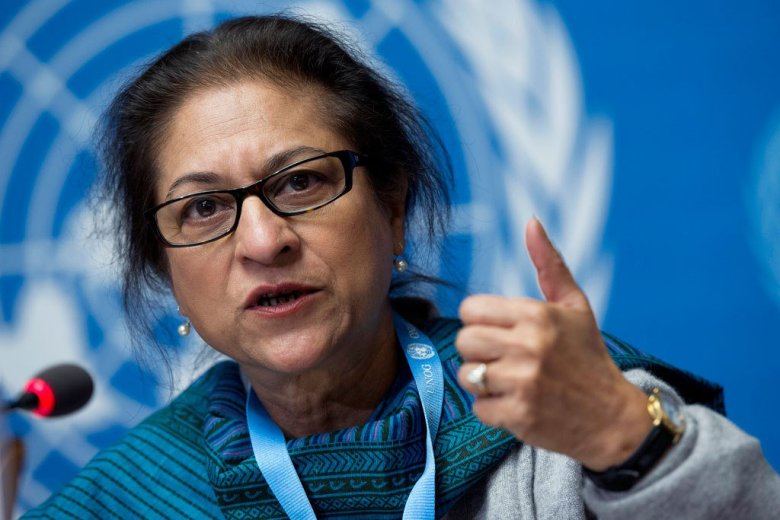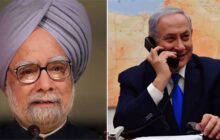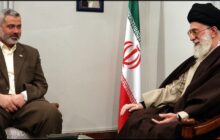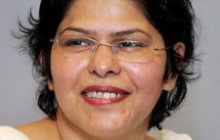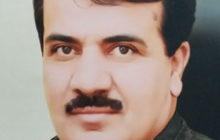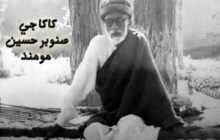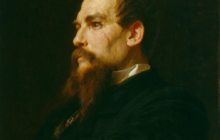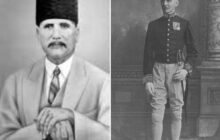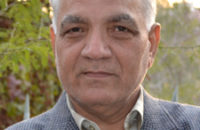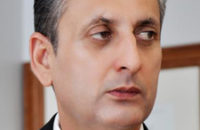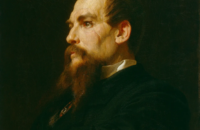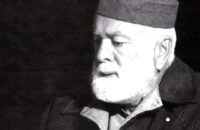Remembering Asma Apa, the Pakistani Activist Who Stood for Those No One Else Dared Represent
By Mohammad Taqi
In 1969, a group of schoolgirls was protesting the martial law regime outside Governor’s House in Lahore when one of them scaled the wall of the mansion and planted a black flag up top. That girl was rusticated from her school, the Convent of Jesus and Mary. Her name later became synonymous with resistance, advocacy and relentless defence of human rights and civil liberties, not just in Pakistan but around the world. She was Asma Jahangir, the conscience of Pakistan and the brave heart from Punjab, who inspired two generations of human rights activists, political workers, lawyers and humanitarians.
Jahangir passed away in Lahore on February 11. She was only 66.
Jahangir’s father, Malik Ghulam Jilani, was a parliamentarian and an outspoken critic of Pakistan’s military rulers Ayub Khan and Yahya Khan. He was affiliated with Sheikh Mujib-ur-Rehman’s Awami League and Jahangir was protesting one of his several arrests at the time. He was later released in February/March 1969 and so was Mujib-ur-Rehman, to let him attend a round table conference in Rawalpindi.
Mujib first came to Lahore and stayed with Jilani before going to the conference. Three years earlier, he had announcedhis famous Six Points, also at Jilani’s residence. Later, when Yahya Khan imposed his martial law after the abdication of Ayub Khan, Jilani was once again arrested on December 22, 1971 under the Defence of Pakistan Rules and was later held under martial law regulations.
Jahangir wanted to challenge this arrest and sought counsel from the family’s attorney friends. One of them, Mohammad Anwar, agreed to file a petition and asked Jahangir to get her mother’s permission and help to put it together. Jahangir said that her mother was rather indisposed and depressed under the circumstances and that they’d have to put the petition together and then she can “go get it signed by mom”. The attorney then asked Jahangir how old she was, to which she replied: 18. He said, “Well, we don’t need your mom’s signature; you can sign it.”
The case was heard and dismissed but Jahangir filed an appeal in the Supreme Court. Another similar petition had been filed by Zarina Altaf Gauhar, the wife of leading journalist and Ayub Khan loyalist Altaf Gauhar, who had been imprisoned by Zulfikar Ali Bhutto – briefly the civilian martial administrator in 1972.
The two petitions were heard jointly and the Supreme Court, led by Chief Justice Hamoodur-Rehman, delivered a landmark judgment – later known as Miss Asma Jilani vs Government of Punjab – which declared the imposition of martial law illegal and General Yahya Khan an usurper.
The court noted that “as soon as the first opportunity arises, when the coercive apparatus falls from the hands of the usurper, he should be tried for high treason and suitably punished. This alone will serve as a deterrent to the would-be adventurers”.
The Asma Jilani case was the basis for the framers of the 1973 constitution to draft not only Article 6 – dealing with high treason – but also making a specific exception to the constitutional principle of non-retrospectivity of offences and punishments in the case of high treason and desecration of the constitution.
Despite the fact that Yahya Khan was already gone by then, it was no mean feat for an 18-year-old girl who at 5 feet 2 inches stood taller than the legal giants before or perhaps after her.
Jahangir later received her law degree from Punjab University and practiced for a while when Pakistan came under yet another spell of martial law – perhaps one of the most ruthless of the four that have afflicted it. General Zia-ul-Haq had toppled Bhutto’s government and imposed a brutal dictatorship which had an additional façade of Islamism, making it twice as poisonous.
The resistance against Zia regime was organised under a nine-party political alliance, the Movement for the Restoration of Democracy (MRD). The MRD leadership was frequently imprisoned by the regime and a second-tier leadership emerged, mostly from the middle-class intelligentsia and lawyers. Bar rooms became focal points of organising protests against Zia.
Jahangir was on the streets fighting the regime, along with the MRD cadres and lawyers and was soon imprisoned. One of Zia-ul-Haq’s most odious acts was the imposition of the Hudood Ordinance 1979, which dealt with adultery, non-marital sex and rape. These laws made it difficult for female victims to seek legal recourse as the way the laws were framed, they ran the risk of being punished for illicit sex. Jahangir was the leading voice of protest against not just these laws but also the barbaric punishments like stoning to death, which they envisaged.
Another Zia-ul-Haq era regulation was the blasphemy law, which Jahangir opposed tooth and nail. She was ultimately herself charged for committing blasphemy. She recalled that she was at a seminar where she was discussing whether a woman’s testimony should be half that of a man, as Zia-ul-Haq’s regime wanted it to be. The chief justice of the Federal Sharia Court was there as well. While making a case for allowing people to interpret the religion themselves, she said that Prophet Muhammad was unlettered or Ummi – a well-known Islamic concept – and ended up being accused of calling him illiterate.
Zia-ul-Haq’s puppet parliament passed a resolution calling for the death penalty for her alleged act of blasphemy. Incidentally, the blasphemy laws at the time did not have that provision. Zia-ul-Haq formed a commission to investigate the charges but she boycotted it. As luck would have it, a colleague of hers who was present at the seminar had taped the whole proceedings, which clearly proved Jahangir’s assertion that she had not committed blasphemy. The issue fizzled out but the regime would go on to amend the notorious law to introduce the death penalty for blasphemy.
In 1993, a 14-year-old Christian boy, Salamat Masih, was charged with allegedly committing blasphemy by writing derogatory remarks about Prophet Muhammad on the walls of the village mosque in Ratta Dhotran in Punjab. The boy and two adults were given the death penalty. The plaintiffs claimed that they had immediately washed off the allegedly offensive material from the mosque’s wall and would not repeat it in court since doing so, in their view, would also constitute blasphemy.
The court accepted the testimony of three men against the boy without ever seeing or hearing a shred of evidence. Jahangir appealed on behalf of the boy and Justice Arif Iqbal Bhatti of the Lahore high court acquitted him in a landmark decision. Masih was given asylum in Germany but Justice Bhatti was later killed in his office. Jahangir herself received all manner of threats but refused to buckle. There are dozens of such cases where she stood up for people whom no one else would dare to represent. Her clients ranged from the insulted and humiliated bonded labourers to girls and women who were hounded by their kin or society in the name of faux honour.
While Jahangir co-founded Pakistan’s first all-female law firm with her sister Hina Jilani, Gul Rukh and Shehla Zia in 1987, her credo was that women’s rights are human rights and cannot and should not be seen in isolation. That same year marked her mega achievement – the co-founding of the Human Rights Commission of Pakistan (HRCP) along with her mentor, the arch-liberal Justice Dorab Patel.
The HRCP became the foremost advocacy and watchdog body for human rights and civil liberties. With its active central secretariat, provincial chapters and special task forces, the HRCP has systematically chronicled human rights abuses, given voice to the voiceless and championed the civil rights and public interest causes in Pakistan.
I was 16 when I first met Jahangir at the colonial-era Dean’s Hotel, Peshawar, where she along with the veteran leftist journalist and fellow campaigner I.A. Rehman, was conducting the provincial chapter meeting of the HRCP. After the meeting, a select group retired to her suite for an informal meeting. I literally sat at her feet listening and learning. From then on, she was Asma apa to me, a comrade mentor whom I looked up to for guidance and inspiration.
These meetings, especially the informal sessions, became a regular feature and almost always ended up taking the form of a study circle where Jahangir, Rehman and the late journalist Aziz Siddiqui, who later chaired the HRCP, would instruct us on policy, politics and above all, tactics and strategy of activism.
Jahangir always said that an activist has to be driven by the conviction of their values, have a heart but also a thinking head. She emphasised on networking of like-minded people. Some years later, I and some fellow medical students had a run-in with Peshawar University. Trained well in the tricks of the trade, we took the university to the high court and won a reported judgment. The university filed an appeal against us with its full might. I went to see Jahangir in Lahore and briefed her about our predicament. In a heartbeat, she agreed to represent us – cash-strapped students – pro bono. Two other legal giants who agreed to represent us were Abid Hasan Minto and the late Justice K.M.A. Samdani. The university kept asking for an adjournment for years and I wonder if it was these upright names that had scared them.
Jahangir was my moral compass; where she stood on an issue was always the right stance to have for me. And in over three decades of following her, I cannot recall one single political, legal, human rights and civil liberties issue where Jahangir took a wrong stand. She was in the right even when some of our other very seasoned leaders erred. One such incident was where a young lady, Samia Sarwar, who happened to be my junior in college, was married off against her will by her parents. Sarwar sought the help of Jahangir and her sister.
Her father, a successful businessman, and mother, a physician from my old neighbourhood, rallied politicians and the legal system to have their way. Even the veteran Pashtun leftist politician, the late Ajmal Khattak who was a senator at the time, went along with their faux honour thesis but Jahangir would not relent in her legal support to the girl. Sarwar was murdered in cold blood by her parents’ guard in Jahangir’s law offices. Her mother had sought a meeting and brought the assassin along with her.
It was such brutality that Jahangir consistently fought against. For someone who stayed away from practical politics, her visual acuity on political matters was 20/20. When General Pervez Musharraf imposed Pakistan’s fourth martial law, she was among the handful of people who opposed it off the bat. Many politicians and intellectuals misread the coup d’état as some sort of revolution by an ostensibly liberal general. Jahangir, on the other side, warned that the fondness of the tin-pot dictator for liquor and dogs should not be interpreted as liberalism.
Jahangir’s disagreement with the Pakistani military was not visceral but principled. The army, since Field Marshal Ayub Khan, has tried to transform Pakistan into an ideological state where the supra-ethnic identity has to be Islamic in ideology, anti-India in orientation and jingoistic in character with the junta ruling directly or indirectly with utter disregard to the people’s mandate.
Jahangir, on the other side, stood for Pakistan as a pluralist nation-state where the democratic power structure is the basis of the federation. She was not oblivious to the shortcomings of our politicians but she was of the classic view that the remedy for a flawed democracy is still more democracy not dictatorship. She came from Punjab but stood up for the Baloch, Sindhis, Pashtuns and Kashmiris. She was truly an internationalist who didn’t care for borders. Her creed was humanism and she practiced it with unwavering devotion and towering grit.
The struggle must go on but I cannot come to terms with the fact that Jahangir is no more. A part of our political being is gone. Adios Asma apa, “in thy face I see, the map of honour, truth and loyalty”.
Mohammad Taqi is a Pakistani-American columnist. He tweets @mazdak.

